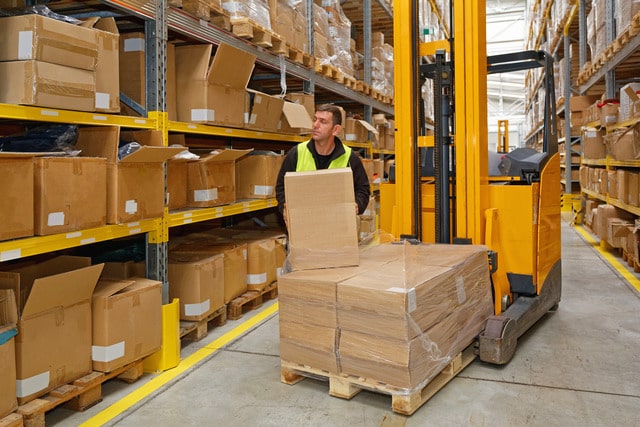How To Improve Your Order Fulfillment Process
For those who often make online purchases, you should be familiar with the anticipation that comes with waiting for your package to be delivered. Most people don’t consider the many things that happen in the background to ensure that a package gets to its intended recipient on time.
Order fulfillment is the process of receiving orders, packaging these orders, and then shipping them to the end consumers at home in a timely fashion. Each step is equally important to the operation’s success; if you clog up one step, you risk jamming up the whole process, which leads to unhappy customers. It’s more complicated to manage recurring deliveries like subscription boxes.
A basic order fulfillment process looks like this:
- Receive online orders: This refers to the process of a customer purchasing a product seen on the online site.
- The order is processed in the office: The main office checks to ensure they have the required item in stock and book the item.
- Notify the client that the order has been processed.
- Notify the warehouse of the order.
- The warehouse locates the product being ordered.
- The order is packed and shipped.
- The client is notified that the package is on its way.
- The order arrives.
There are four ways to go about order fulfillment for a company: in-house fulfillment, outsourced fulfillment (where you hire an established company with the infrastructure, technology, and skills like Selery Fulfillment to handle your order fulfillment for you), hybrid fulfillment, and drop shipping. All methods have their pros and cons attached and will depend on your specific business model.
This article aims to explore the different ways to increase the efficiency of your order fulfillment process regardless of the method you have chosen to implement in your business.
- Demand Seamless Integration
As has become common with many companies that offer shipping, most of the products you have are not manufactured in-house. You source the goods you advertise in your online store from various distributors.
If your company falls under this umbrella, consider integrating a seamless connection with your suppliers through an order management system (OMS).
The OEM does all the communication between you and the supplier. This will drastically improve the shipping time and the speed at which the order will be delivered to the client.
- Establish End-To-End Order Visibility
The OMS facilitates real-time communication, so the next step to improving the process is by increasing transparency throughout the supply chain.
This means ensuring that both you and your suppliers can access information across the whole supply chain. This includes viewing the same catalog, accessing the inventory, and checking the order fulfillment process. All parties involved should also check the inventory (e.g., quantities and where they are stored).
Moreover, your online customers should see whether an item they wish to purchase is in stock and how many are still available. This transparent system is called end-to-end visibility. It is a crucial step toward accurate order fulfillment and customer satisfaction.
- Select The Right Shipper
A major concern that often arises from order fulfillment in e-commerce is shipping. Shipping can make or break your business. If the shipper you choose is constantly underperforming, the blame will be both on you and the shipper as you are at the forefront of the operation.

It is advisable to audit your shipper regularly. The shipper you choose should offer real-time order tracking (part of the end-to-end visibility), which will allow you to track the progress of an order. In the event of delays or losses, you can accurately track the whereabouts of the goods.
- Implement Exception-Based Order Management
Exception-based order management kicks in when there are delays with your regular shipper. To ensure that an order arrives at the stipulated time, you can upgrade your shipping methods. Although a costly alternative, the additional shipping costs will go a long way in increasing brand loyalty and is also a marketing technique in its own right.
- Sort Out Your Warehouses
The average shopper expects their order to arrive on time. In reality, the speed at which an order may arrive can determine whether a shopper will make the purchase or not.
There are two ways your business can go about increasing the speed of delivery:
- Pick warehouses and shippers that can meet high-speed delivery requirements.
- Store your products in warehouses spread all over the region where you offer delivery services. This ensures fast delivery without incurring higher shipping costs.
Both methods have their pros and cons, and it is up to you to see which method will get the best results without exceeding your bottom line.
There are shipping algorithms available that can help you identify the optimal shipping method for each order to reduce the risk of wasting money and not delivering the order on time.
Another vital aspect to consider while on the topic of warehouses is the system for stocking inventory in the warehouse. You have to ensure the storage system is clear and outright to improve the speed at which an item can be located. The quicker it is located, the faster it can be prepared for delivery. Remember that a clear system has the added benefit of better inventory management and reduces the risk of theft.
- Communicate With Your Customer
It is always advisable to keep in touch with your customers; real-time communication is always appreciated regarding the status of their order. Communicate with the clients when the order has been processed, when it has been shipped, and when it has been delivered. This leaves a trail that can be followed if there is a need for an assessment of the supply chain.
- Straighten Out Your Returns Policy
The order fulfillment process doesn’t end with delivery. The process ends when you have ensured customer satisfaction, and at times that includes having an attractive returns policy in case a client wishes to make a return. Ensure you have set an effective returns policy in place.
Conclusion
At the core of it all, the order fulfillment process aims to make clients happy. Always go by this and ensure that everything runs smoothly. In the end, what matters is that you get no complaints and you gain customer satisfaction not only with your products but also with your services.





